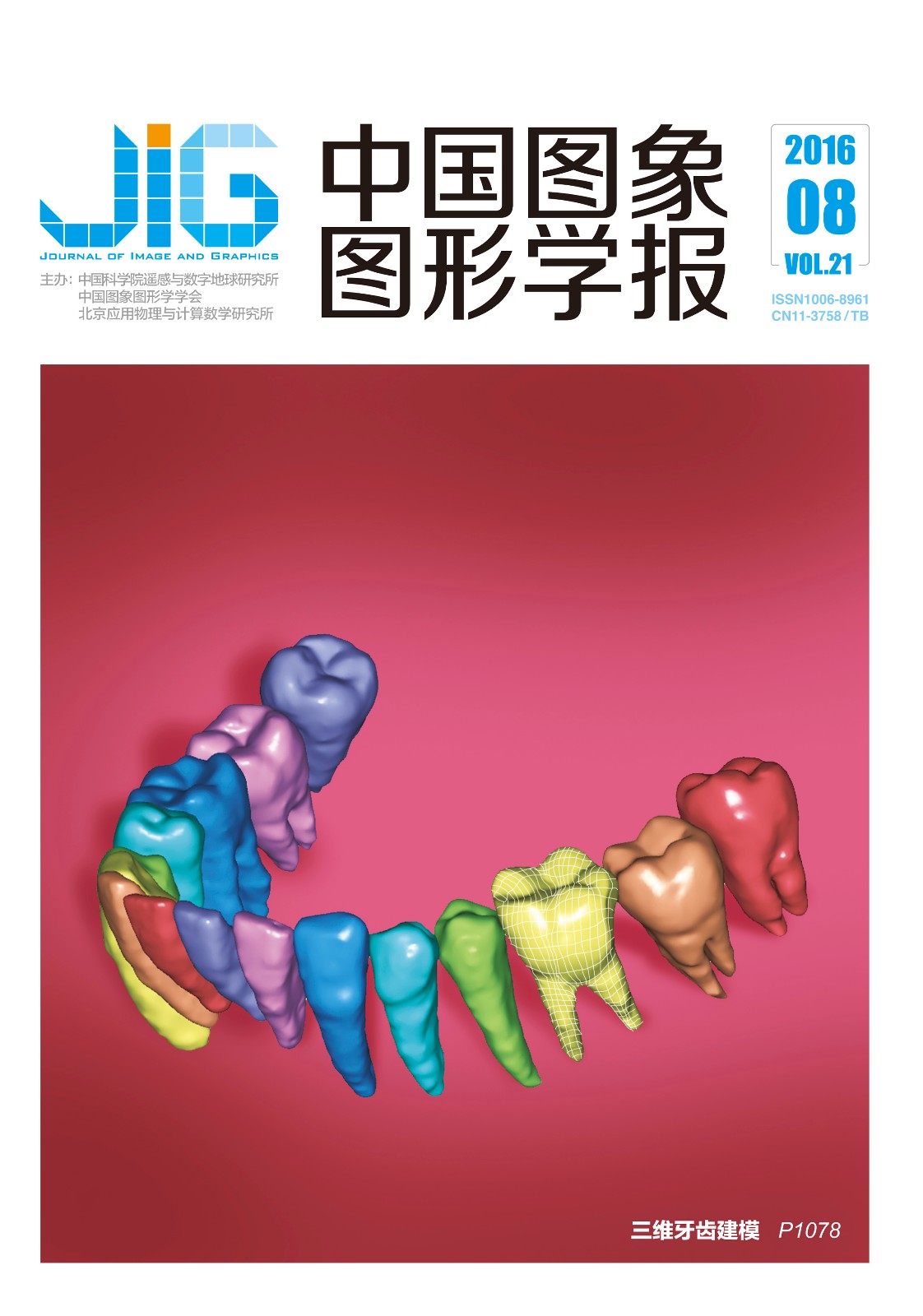
基于结构组稀疏表示的遥感图像融合
张晓1, 薛月菊2, 涂淑琴2,3, 胡月明1, 宁晓锋4(1.华南农业大学资源环境学院, 广州 510642;2.华南农业大学电子工程学院, 广州 510642;3.华南农业大学数学与信息学院, 广州 510642;4.广东省土地开发储备局, 广州 510630) 摘 要
目的 稀疏表示在遥感图像融合上取得引人注目的良好效果,但由于经典稀疏表示没有考虑图像块与块之间的相似性,导致求解出的稀疏系数不够准确及字典学习的计算复杂度高。为提高稀疏表示遥感图像融合算法的效果和快速性,提出一种基于结构组稀疏表示的遥感图像融合方法。方法 首先,将相似图像块组成结构组,再通过组稀疏表示算法分别计算亮度分量和全色图像的自适应组字典和组稀疏系数;然后,根据绝对值最大规则进行全色图像稀疏系数的部分替换得到新的稀疏系数,利用全色图像的组字典和新的稀疏系数重构出高空间分辨率亮度图像;最后,应用通用分量替换(GCOS)框架计算融合后的高分辨率多光谱图像。结果 针对3组不同类型遥感图像的全色图像和多光谱图像分别进行了退化和未退化遥感融合实验,实验结果表明:在退化融合实验中,本文方法的相关系数、均方根误差、相对全局融合误差、通用图像质量评价指标和光谱角等评价指标比传统的融合算法更优越,其中相对全局融合误差分别是2.326 1、1.888 5和1.816 8均远低于传统融合算法;在未退化融合实验中,除了在绿色植物融合效果上略差于AWLP(additive wavelet luminance proportional)方法外,其他融合结果仍占有优势。与经典稀疏表示方法相比,由于字典学习的优越性,计算复杂度上要远低于经典稀疏表示的遥感图像融合算法。结论 本文算法更能保持图像的光谱特性和空间信息,适用于不同类型遥感图像的全色图像和多光谱图像融合。
关键词
Remote sensing image fusion based on structural group sparse representation
Zhang Xiao1, Xue Yueju2, Tu Shuqin2,3, Hu Yueming1, Ning Xiaofeng4(1.College of Resources and Environment, South China Agricultural University, Guangzhou 510642, China;2.College of Electronic Engineering, South China Agricultural University, Guangzhou 510642, China;3.College of Mathematics and Informatics, South China Agricultural University, Guangzhou 510642, China;4.Guangdong province land development and reserve board, Guangzhou 510630, China) Abstract
Objective Remote sensing image fusion based on sparse representation has achieved dramatic results. However, classical sparse representation faces two problems. First, the computational complexity of dictionary training is extremely high. Second, the classical sparse representation does not consider the similarity between image patches, which causes performance degradation in solving sparse coefficients. A new structural group sparse representation (SGSR), which has been successfully applied to image restoration and super-resolution image reconstruction, can effectively solve the two problems. To improve the accuracy and speed of sparse representation of remote sensing image fusion, this study presents a method of remote sensing image fusion based on SGSR. Method Considering that the spectral range of panchromatic image does not exactly override all the bands of a multispectral image, a luminance component derived from the adaptive weight coefficient of each band image is initially defined to reduce the spectral distortion. Then, the Euclidean distance between the gray scales of image patches is calculated. The most similar structure patches are selected to constitute the structural groups for luminance component image and panchromatic image, and these structural groups are regarded as the basic unit of dictionary learning and sparse representation. The adaptive dictionary learning method by singular value decomposition obtains the adaptive dictionary for every structural group. Furthermore, group sparse coefficient of the luminance component image and panchromatic image are calculated via group sparse representation algorithm. Finally, using the absolute maximum fusion rule, new sparse coefficients can be obtained by part of panchromatic image sparse coefficient substitution, and the high spatial resolution intensity image is reconstructed using the panchromatic image group dictionary and the new sparse coefficients. The high-resolution multispectral image is obtained via the general component substitution framework. Result SGSR is evaluated by the degraded and nondegraded image fusion experiments on Gaofeng-1, Quickbird, and Worldview images. In the degraded remote sensing image fusion experiment, five quantitative evaluation indices (CC, RMSE, ERGAS, UIQI, and SAM) are used to compare SGSR with the traditional methods (GIHS, PCA, and HPF), AWLP, and classical sparse representation (SR) method. Results show that five quantitative indices of SGSR are better compared with the other methods. In the nondegraded remote sensing image fusion experiment, psnr, grad, entropy, Dλ, Ds, and QNR are used to compare these image fusion methods. SGSR generally obtained better results, except that spectral information preservation performance of SGSR in the green plant region is slightly worse than those of AWLP. By comparing the speed of training dictionary, SGSR is approximately 10 times faster than SR. Conclusion SGSR can improve spatial resolution and preserve spectral information in a remote sensing image and has better performance than the traditional methods, AWLP, and SR. Moreover, by comparing SGSR with SR, SGSR significantly reduces the computational complexity. Therefore, SGSR is suitable for multispectral image and panchromatic image fusion of all types of remote sensing images and may be applied in this field.
Keywords
remote sensing image fusion adaptive dictionary group structural group representation sparse representation general component substitution
|



 中国图象图形学报 │ 京ICP备05080539号-4 │ 本系统由
中国图象图形学报 │ 京ICP备05080539号-4 │ 本系统由